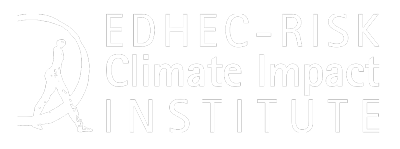
Real Estate
Real Estate has become an essential part of the portfolios of institutional investors and is now established as a source of diversification when combined with traditional asset classes. EDHEC-Risk Institute has had a long-standing commitment to the analysis of this alternative asset class and to its value-adding integration in the field of asset allocation and multi-class portfolio construction.
Notably, a 2007 study by EDHEC-Risk Institute identified a need among institutional investors for real estate indexing. This led to the development and launch in 2009, in collaboration with the Institut de l’Epargne Immobilière et Foncière (IEIF), of the EDHEC IEIF Commercial Property France Index. The index tracks a fully transparent and investable portfolio of property trusts with little exposure to traditional financial market risk and is now the leading benchmark for indirect investment in French commercial property.
More recently, the research carried out by EDHEC-Risk Institute focuses on the benefits of real estate investing as part of the performance portfolio or hedging portfolio within innovative liability-driven or goal-based investing solutions.
The EDHEC IEIF Monthly Commercial Property Index (France) was developed by IEIF (Institut de l’Epargne Immobilière et Foncière) and EDHEC-Risk Institute, in collaboration with the global competitiveness centre Finance Innovation, under the patronage and with the support of La Française Group. Published since 2009, this index measures the monthly performance of an aggregate portfolio of unlisted funds, without financial leverage, representative of the performance of French commercial property.
Monthly Highlights: The EDHEC IEIF Monthly Commercial Property Index (France) price index is decreased by -4.64% in March 25 after a decrease by -0,02% in February 25. The index is down by -4.66% year-to-date. The total return index is down -3.41% on twelve month rolling average..

Click on the Institut de l'Epargne Immobilière et Foncière (IEIF) website for further information
- "Placements : quels rendements en 2023 ?” - Le Point (05/06/2023)
- "Les fonds immobiliers grand public affichent leurs performances et leurs investissements pour le 1er trimestre 2023" - Boursorama (24/05/2023)
- "Début d'année stable pour les SCPI” - Citywire (19/05/2023)
- "SCPI de rendement : la bonne santé du marché devrait se poursuivre en 2023" - Le Courrier Financier (25/11/2022)
- "Repli de l’indice de prix EDHEC IEIF Immobilier d’Entreprise France " - Funds Magazine (13/09/2022)
- "Où investir dans l’immobilier : la SCPI sur le podium de l’épargne ?” - LCI.fr (21/09/2020)
- "Au premier semestre 2020, les SCPI ont su contenir les impacts de la crise sanitaire" - Boursorama (04/09/2020)
- "La pierre-papier a moins séduit au premier semestre” - Le Monde (27/08/2020)
- "La collecte des SCPI et OPCI subit l’effet Covid-19" - L'Agefi (26/08/2020)
- "La souscription en ligne dope le succès des SCPI" - Le Nouvel Economiste 06/12/2019
- "Immobilier: les Français continuent à se ruer sur la pierre papier – 22/11/19” - Le Figaro (22/11/2019)
 This research chair on real estate in modern investment solutions currently benefits from the support of Swiss Life Asset Management. Its aim is to provide a comprehensive analysis of the role of listed and unlisted real estate investments in institutional portfolios, with a particular emphasis on how dedicated forms of real estate investments can prove to be key ingredients of the performance and hedging components of welfare-improving forms of retirement solutions. An important part of this research effort will be dedicated to assessing the theoretical, empirical and practical challenges inherent in factor investing in real estate markets, with the ambition to facilitate the emergence of more efficient approaches to real estate risk premia harvesting. As part of the research chair, EDHEC-Risk Institute also proposes to examine how dedicated forms of real estate investments can be used as part of goal hedging portfolios within improved retirement solutions, based on their ability to generate inflation-linked replacement income cash flows.
This research chair on real estate in modern investment solutions currently benefits from the support of Swiss Life Asset Management. Its aim is to provide a comprehensive analysis of the role of listed and unlisted real estate investments in institutional portfolios, with a particular emphasis on how dedicated forms of real estate investments can prove to be key ingredients of the performance and hedging components of welfare-improving forms of retirement solutions. An important part of this research effort will be dedicated to assessing the theoretical, empirical and practical challenges inherent in factor investing in real estate markets, with the ambition to facilitate the emergence of more efficient approaches to real estate risk premia harvesting. As part of the research chair, EDHEC-Risk Institute also proposes to examine how dedicated forms of real estate investments can be used as part of goal hedging portfolios within improved retirement solutions, based on their ability to generate inflation-linked replacement income cash flows.

